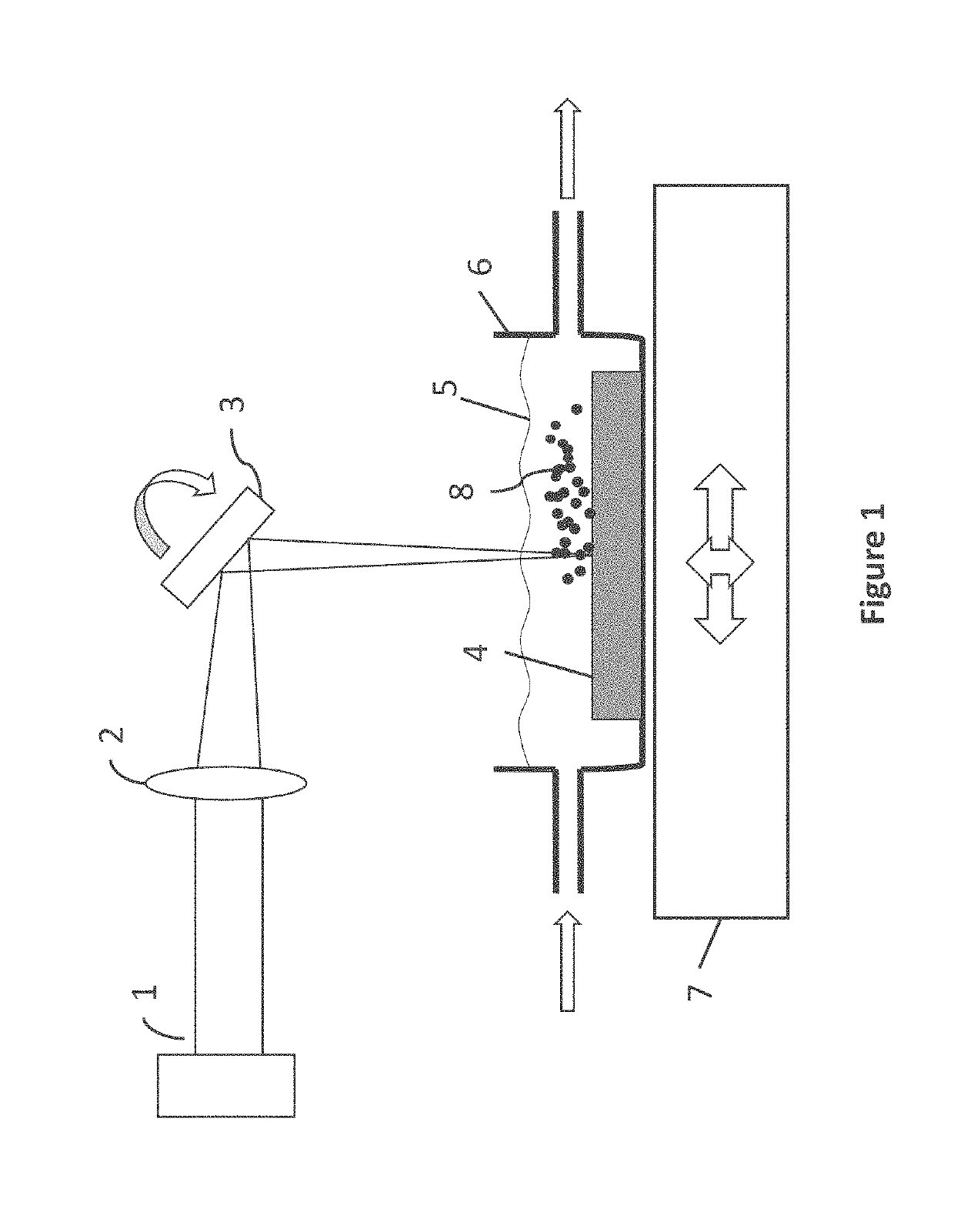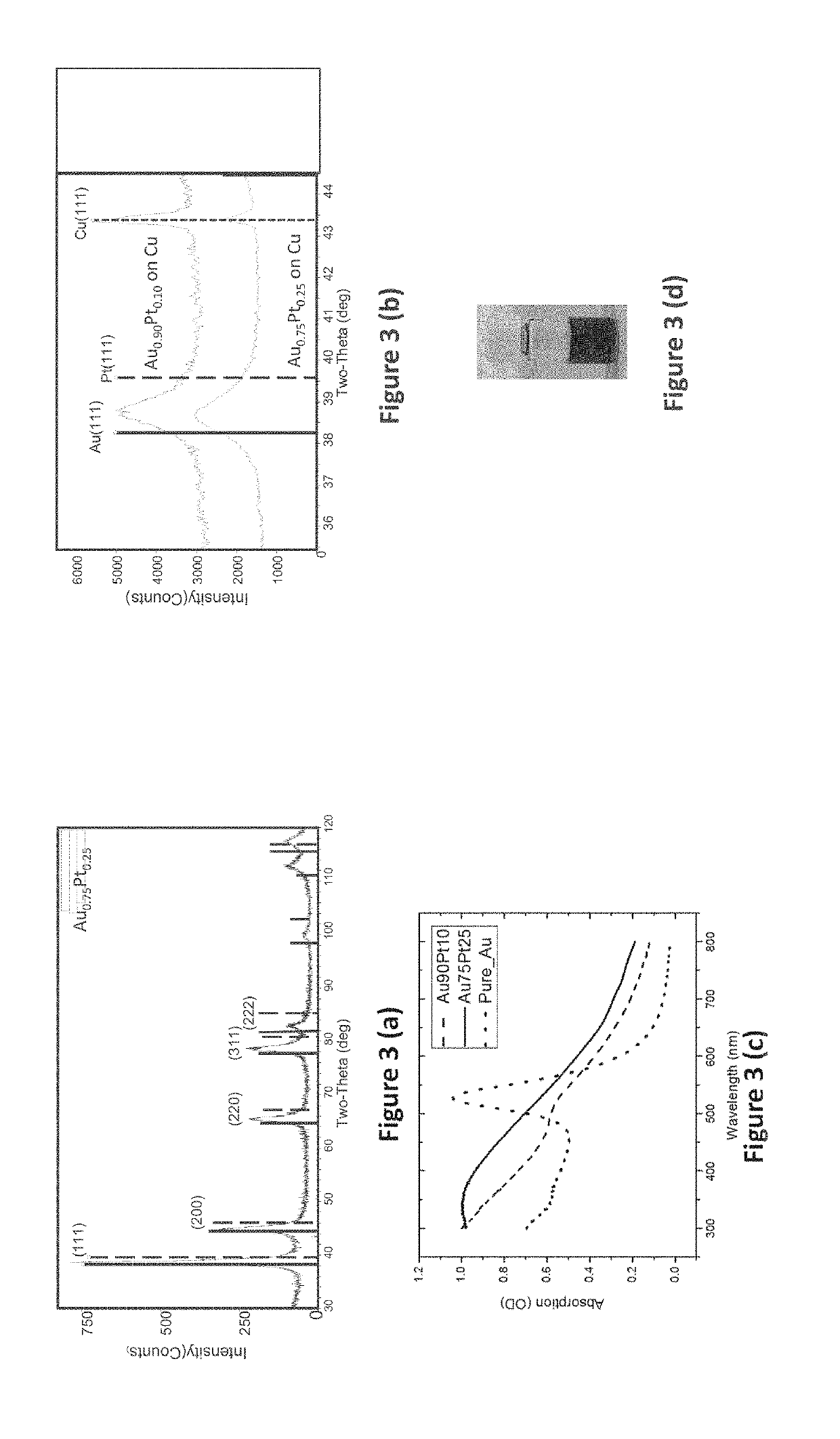Gold-platinum alloy nanoparticles in colloidal solutions and biological applications using the same
a technology of colloidal solution and nanoparticles, applied in the field of nanoparticles, can solve the problems of different surface chemistry, biomolecule detection process, and require modification and optimization of protocols
- Summary
- Abstract
- Description
- Claims
- Application Information
AI Technical Summary
Benefits of technology
Problems solved by technology
Method used
Image
Examples
Embodiment Construction
[0024]As discussed above, it is desirable to provide nanoparticles that can be used to form bio-conjugates that could be used in place of known gold nanoparticles and that would not require a change in assay procedures or conditions. In addition it would be helpful if these bio-conjugates had different colors from the standard gold nanoparticle color of red to allow for multiplex assays on the same test strip. Without significantly compromising the advantageous properties of gold nanoparticles, one way to adjust the nanoparticle color is to alloy gold with other metals. See for example Liu et al. U.S. Pat. Nos. 8,246,714 and 8,858,676 which teach methods of fabricating gold alloy nanoparticles by either high repetition rate short pulse duration pulsed laser ablation in liquid or burst laser ablation in a liquid, respectively. The advantages of these methods include the flexibility of adjusting alloy composition, defined as the atomic or weight ratio between the gold and the second m...
PUM
| Property | Measurement | Unit |
|---|---|---|
| Time | aaaaa | aaaaa |
| Nanoscale particle size | aaaaa | aaaaa |
| Nanoscale particle size | aaaaa | aaaaa |
Abstract
Description
Claims
Application Information
 Login to View More
Login to View More - R&D
- Intellectual Property
- Life Sciences
- Materials
- Tech Scout
- Unparalleled Data Quality
- Higher Quality Content
- 60% Fewer Hallucinations
Browse by: Latest US Patents, China's latest patents, Technical Efficacy Thesaurus, Application Domain, Technology Topic, Popular Technical Reports.
© 2025 PatSnap. All rights reserved.Legal|Privacy policy|Modern Slavery Act Transparency Statement|Sitemap|About US| Contact US: help@patsnap.com



